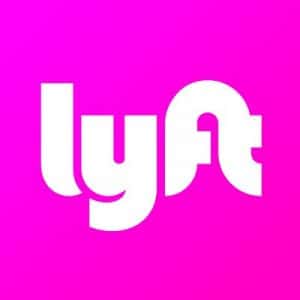New York Lyft Accident Lawyer
More and more people are becoming Lyft drivers as more and more people subscribe and use Lyft each day. What if your Lyft driver gets into an accident with you in the car? Here is some general information you should know about Lyft drivers.
NYC Requirements for LYFT Drivers
- TLC Plates. If you look carefully, all Lyft drivers have the following license plates: T123456C. That means they are licensed and regulated by the NYC Taxi and Limousine Commission (TLC). TLC has specific requirements separate from applicable New York law, which all Lyft drivers must follow.
Note: This city agency regulates yellow, green, black Lincoln, LYFT, and Lyft cabs, and limousines (among other vehicles).
- Liability Insurance Policies. In New York, all private vehicles must have liability insurance at a minimum of $25,000 per person / $50,000 per accident. Lyft drivers must have for-hire insurance with limits of $100,000 per person / $300,000 per accident to be licensed under TLC.
Lyft considers themselves as a “peer-to-peer transportation platform”, which means that their drivers use their own cars to pick up passengers, who request a ride through the app. Drivers are not considered employees of the company.
What If There’s an Accident?
If you’re a passenger of an Lyft driver and that driver due to his or her own fault gets into an accident, your monetary recover will generally be limited to that driver’s insurance coverage, which is required to be least $100,000. Because UBER drivers are considered “partners” rather than “employees,” drivers operating – supposedly – alone without the control and supervision of UBER (the company).
- If your injuries are minor, then the driver’s insurance limits may be sufficient to cover your entire compensation. This means that the Lyft driver (and his/her insurance company) will compensate you for your injuries, not Lyft (the company).
THE SITUATION GETS TRICKIER UNDER THE FOLLOWING SCENARIO
- If the injuries were severe (perhaps deadly), the driver’s insurance will only cover up to $100,000. See the problem: Where do you get the rest of your compensation if greater than $100,000? Some would say that Lyft (the company) is responsible.
- Whether Lyft (the company) is responsible depends on whether Lyft driver(s) are employees or independent contractors. Usually, a company (employer) pays for accidents caused by its employees while on the job. A company (employer), however, is not usually responsible for accidents caused by independent contractors.
- So if UBER thinks of its drivers as independent contractors, it may relieve itself from liability altogether when facing a serious accident with serious injuries. This situation would leave you with inadequate compensation.
- Lyft have claimed that they insure their drivers in addition to such drivers’ private insurance. Whether Lyft’s’s insurance applies will depend on such policies’ language and the type of the accident, which should be left for an attorney to analyze.
With the proliferation of Lyft (and UBER) transportation, this issue will evolve to some definite rule of law. Questions concerning accidents occurring during the use of cell phones or texting of Lyft (andUBER drivers while driving in the course of their job and vis-à-vis the responsibility of Lyft will come to a head as such legal cases are processed through our court system and a just solution is fashioned.
The insurance issues have now evolved and implemented as follows per Lyft:
Insurance Policy
The subject of insurance can be complicated, but it’s important you know how and when our policies cover you and your passengers in the event of an incident. The following is an overview of how our insurance policies work.
There are four coverages included in our insurance policies (unless otherwise noted, these coverages are in effect from the time you accept a ride request until the time the ride has ended in the app).
- Contingent Liability (coverage only while in driver mode waiting for a ride request)
- Primary Automobile Liability
- Contingent Comprehensive & Collision
- Uninsured/Underinsured Motorist (UM/UIM)
Coverage when driver mode is off
Your personal insurance is your insurance policy
Coverage when driver mode on but no ride accepted
Lyft provides contingent liability coverage to protect you if your personal insurance doesn’t.
How does contingent liability coverage work?
Our contingent liability coverage is designed to provide coverage when the app is in driver mode before you’ve received a ride request in the event your personal insurance does not respond. The policy has a $50,000 maximum limit per person, $100,000 maximum limit per accident, and a $25,000 maximum limit for property damage. There is no deductible under this policy.
Note: This policy may be modified to comply with specific city or state insurance requirements.
Coverage when ride accepted through ride ends
Our primary liability insurance is designed to act as the primary coverage from the time you accept a ride request until the time the ride has ended in the app. The policy has a $1,000,000 per accident limit. Note: If you already carry commercial insurance (or personal coverage providing specific coverage for ridesharing), Lyft’s policy will continue to be excess to your insurance coverage.
How does contingent collision coverage work?
Our contingent collision coverage is designed to cover physical damage to your vehicle resulting from an accident as long as you have obtained collision coverage on your personal automobile policy. The contingent collision coverage will apply up to the actual cash value of your vehicle or cost of repair, whichever is less. The policy has a $2,500 deductible. This policy is designed to step in regardless of whether or not you’re at fault.
How does contingent comprehensive coverage work?
Similar to our contingent collision coverage, our contingent comprehensive coverage is designed to cover physical damage to your vehicle resulting from a non-collision event (for example a fire, vandalism, a natural disaster, etc.) as long as you have obtained comprehensive coverage on your personal automobile policy. The contingent comprehensive coverage will apply up to the actual cash value of your vehicle or cost of repair, whichever is less. The policy has a $2,500 deductible. This policy is designed to step in regardless of whether or not you’re at fault.
What does UM/UIM mean and how does this coverage work?
UM stands for uninsured motorist and UIM stands for underinsured motorist. In the event of an accident (once you have accepted a ride or are transporting a passenger) with a driver who is uninsured or underinsured and is ultimately at fault for bodily injury caused to you and/or your passengers, our UM/UIM coverage will apply up to $1M per accident. There is no deductible on our UM/UIM policy.
When do these coverages apply?
It depends on the coverage. During the time the Lyft Driver app is on and available to accept a request (also known as “driver mode”), the contingent liability policy is in effect.
The other three coverages are in effect beginning when you’ve accepted a passenger ride request and are on your way to pick the passenger up. These coverages continue while you’re giving a ride to a passenger until the time you end the ride in the app.
What’s covered through Express Drive?
Express Drive renter’s insurance coverage depends on which of the following three periods you’re in when an incident occurs:
- Personal driving: You’re offline (i.e. not in driver mode)
- Waiting for a request: When the app is in driver mode and you have not received a ride request.
- Ride in progress: This includes any time from accepting a ride request until the time the ride has ended in the app.
With the proliferation of Lyft (and Uber), this evolution of insurance coverage provides protections to the consumer – you.
Email Us For Your Free Case Evaluation






